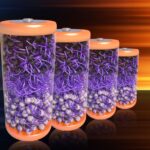 Researchers at the University of Tokyo have developed a synthetic polymer inspired by the fibrous structure of a loofah. This smart material is strong when dry yet softens when wet while adapting to different pH levels. It’s designed for practical uses ranging from efficient filtration to durable structural components in electronics, construction, and medical devices.
Researchers at the University of Tokyo have developed a synthetic polymer inspired by the fibrous structure of a loofah. This smart material is strong when dry yet softens when wet while adapting to different pH levels. It’s designed for practical uses ranging from efficient filtration to durable structural components in electronics, construction, and medical devices.
Interestingly, the team didn’t initially set out to recreate a loofah’s look. As Associate Professor Yoshimitsu Itoh explains, “We created a lightweight, robust porous polymer that ended up resembling a natural loofah’s network – a pleasantly unexpected result.” This careful blend of design and serendipity has paved the way for a material that not only protects but also performs.
The polymer’s porous network allows fluids to pass through while trapping bacteria and viruses effectively. Its ability to react to changes in pH means that it can become stiffer or more flexible depending on its environment. If you’ve ever needed a filter that adapts on the fly, this might just be the innovation to watch.
Tests confirm that the membrane’s 70‑nanometre pores are just right for filtering out microscopic threats. Even more impressive is its mechanical strength – achieving a stiffness of up to 11 gigapascals at a density of merely 0.5 grams per cubic centimetre, it’s roughly four times stronger than standard polymers. This blend of lightness and durability could be key to applications where every gram counts.
Crafted from a lignin‑like substance found naturally in wood, the polymer even lends itself to sustainable manufacturing. The production process is delightfully simple: pure water, an applied voltage, and a mixture of resorcinol and aldehyde combine to self‑assemble into an ultrathin, porous membrane without the need for additional processing steps. This approach, which supports roll‑to‑roll processing, makes scaling up a more realistic prospect.
Looking forward, the research team is considering converting the membrane into a porous carbon form. This could lead to exciting developments in miniaturised electronics, such as microcapacitors, reinforcing the polymer’s potential role in next‑generation sustainable technologies.








